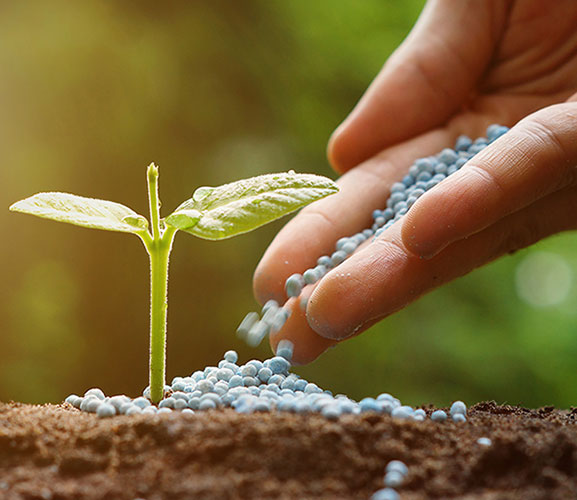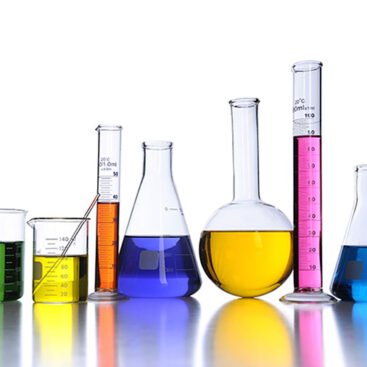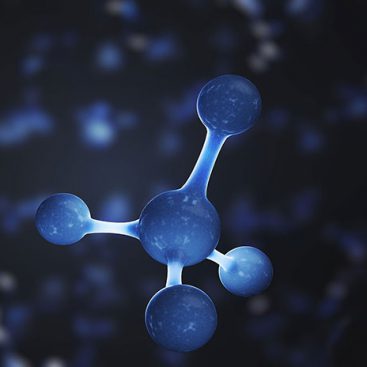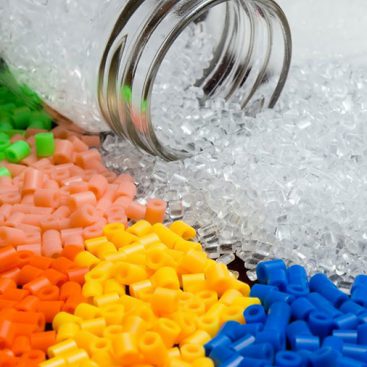Petrochemical Product
Chemical Fertilizers Products
Like us humans who need food to survive and grow, plants also need to be fed with various chemical fertilizers to survive and grow, in addition to water and light to strengthen their roots and grow better. This is why fertilizing fields and gardens are critical and has been emphasized. Any material that increases the yield of the crop in order to strengthen the soil and increase its fertility, both qualitatively and quantitatively, is called fertilizer.
In this article, we will introduce the types of chemical fertilizers. Hence you can choose the fertilizer you need with complete familiarity and safety.


Chemical Fertilizers
The production of these types of fertilizers brought about a revolution in agriculture and an increase in the production of crops. The chemical composition and purity percentage of different fertilizers containing the same element are very different.
These differences affect the consumption, spreading method, fertilization time, and effectiveness of fertilizers. Therefore, it is necessary to understand the types of chemical fertilizers before choosing or using them.
Chemical fertilizers are divided into two categories, some of which are high-use plant elements (macro-element), and some are part of low-use plant elements (micro-element).
- Consumable elements (macro) include: nitrogen – phosphorus – potassium – magnesium – calcium
- Low-consumption (micro) elements include: iron-zinc-copper-manganese-boron
Chemical fertilizers are divided according to the type of element. For example, nitrogen, phosphorus, and potassium fertilizers have one or two elements. If a fertilizer has all the elements together and proportionally, it is called complete fertilizer.
This article explains nitrogen fertilizers, phosphorus fertilizers, potassium, and sulfur fertilizers, and calcium and magnesium fertilizers are considered the essential chemical fertilizers.
Nitrogen Fertilizers
- Plants can absorb nitrogen by nitrate, ammonium ion, and urea. Ammonium nitrate has 33% nitrogen, and plants can absorb forms of nitrogen. Urea is the most common nitrogen fertilizer in Iran. Urea is one of the organic compounds that plants in this form can absorb. Urea solution is also used in foliar spraying of plants.
- Ammonium sulfate has 24% sulfur in addition to nitrogen. Ammonium hydrate is obtained by dissolving ammonia in water and is placed under soil layers before planting with special syringes.
- Calcium nitrate and potassium nitrate have a low percentage of nitrogen and are used less as a source of nitrogen fertilizer in the soil. These fertilizers are often used in nutrient solutions as sources of calcium or potassium.
- Urea fertilizer, also known as sugar fertilizer, is one of the world’s most widely used and cheapest nitrogen chemical fertilizers. Urea fertilizer has 46% nitrogen, and its solubility in water is perfect, and for this reason, it is used in the soil to prepare fertilizer solutions and foliar spraying on plants. The problem with urea fertilizer is that it washes too much in the soil due to its high solubility. If the irrigation water or rainfall is strong and the soil is sandy, this fertilizer will easily wash into the soil.
- necessary important fertilizer is ammonium sulfate. This fertilizer has 21% nitrogen and 24, is acidic, and is the best fertilizer for Iran’s soil conditions. Ammonium sulfate fertilizer is relatively expensive due to its low nitrogen percentage. Ammonium nitrate fertilizer is necessary important fertilizer that is produced from the combination of ammonia and nitric acid.
The characteristic of this fertilizer is that it has both types of plant nitrogen source, as, i.e. nitrate and ammonium. One of its disadvantages is that it easily absorbs moisture from the air, and the fertilizer grains stick together and form clumps; it is also flammable. If the fertilizer is hit, it will catch fire. - Another famous nitrogen fertilizer is urea fertilizer with sulfur coating. The solubility of urea fertilizer is high and it is possible to wash it, and the grains of urea fertilizer creates a sulfur coating on it. This fertilizer is called slow dissolving.
Examples of nitrogen fertilizers
- Ammonium sulfate: Ammonium sulfate fertilizer has 21% nitrogen and 23% sulfur. This acid-forming fertilizer is suitable for calcareous, relatively, expensive, and slightly resistant to washing.
- Urea fertilizer: contains 46% nitrogen. This fertilizer is not acid-forming and is suitable for most soils. It is cheap and the most common Iranian nitrogen fertilizer.
- Ammonium nitrate fertilizer: contains 26% nitrogen. This fertilizer is suitable for sugar beet and is relatively expensive and sensitive to washing.
- Ammonium phosphate fertilizer: contains 17% nitrogen and 26% phosphoric acid. Ammonium phosphate fertilizer is relatively acid-forming and dual-p, has a reasonable price, and is slightly resistant to washing.
- Urea form fertilizer: contains 26% nitrogen. This fertilizer is relatively acidic and suitable for grass, it is expensive and very resistant to washing.
- Urea fertilizer with sulfur coating: it has 35% nitrogen. It is, suitable for light soils and soils and resistant to washing, and its price is reasonable.
Phosphorous Fertilizers
The percentage of phosphorus in chemical fertilizers is often mentioned as the percentage of phosphorus oxide. Phosphoric acid, which is obtained from the decomposition of soil organic matter, can be absorbed by plants, however, it is not used as a chemical fertilizer.
The phosphorus fertilizers applied to the soil are stabilized by calcium in alkaline soils and iron and aluminum in acidic soils. Usually, the phosphorus fertilizer given to the soil remains absorbable by the plant in the first year, and a small part becomes absorbable by the plant in the following years.
Because the solubility and movement of phosphorus fertilizer in the soil are very limited, phosphorus fertilizers should be given to the soil before planting and placed directly in the root development area.
The maximum amount of phosphorus solution is observed at a pH of 6 to 6.5. Therefore, bringing the pH of the soil to these limits effectively increasing the solubility and absorption of phosphorus. Changing soil pH can be done in acidic soils by adding lime and in alkaline soils by adding sulfur or acidic fertilizers. Using a lot of animal manure can reduce soil pH. The solubility of phosphorus fertilizers is also variable.
Potassium Fertilizers
Potassium deficiency is more common in acidic soils and sandy soils. Nonetheless, its deficiency is also observed in other soils under the conditions of irrigation and harvesting a large number of crops (especially alfalfa).
Most potassium fertilizers are soluble in water, and the way they are added to the soil does not have a significant role in the effectiveness of the fertilizer. Chlor potassium is the most abundant potassium compound in nature. Potassium nitrate has 44% potassium oxide, but it is an expensive fertilizer. Potassium sulfate is the most common potassium fertilizer used in agriculture. Potassium is also added to the soil from the initial decomposition of plant residues. Still, soil humus is not considered a significant source of potassium because potassium is not stabilized by organic matter.
Soils that have a large amount of vermiculite and illite clay stabilize potassium. The soil solution’s potassium is balanced and is considered a soil potassium reserve. If the stabilization intensity is high, potassium should be placed in strips before the planting.
Calcium and Magnesium Fertilizers
Calcium and magnesium are used less as fertilizers because their deficiency is not seen in many soils (with the exception of soils in humid areas). The soils of humid regions are acidic and calcium and magnesium are used to improve them. In acidic soils, a large amount of calcium carbonate, double calcium, magnesium carbonate, or calcium sulfate is used to improve the soil.
As a result, the possible deficiency of calcium and magnesium is also eliminated. Changing the pH of acidic soils is not desired, and the goal is only to supply the calcium needed by the target plant. In that case, phosphorus fertilizers containing calcium can be used. Magnesium sulfate or double sulfate of magnesium and potassium are used to solve magnesium deficiency.
Sulfur Fertilizers
Sulfur contamination is observed in soils that are heavily exposed to washing. In this case, sulfur should be added to the soil as fertilizer. The amount of sulfur in fertilizers is mentioned as the percentage of sulfur element (s). The Cho sulfur-containing fertilizer type depends on the soil’s pH. In acidic soils, calcium sulfate or gypsum can be used as a source of sulfur. This composition contains 18% sulfur and 22% calcium. In addition to providing sulfur and calcium, gypsum also increases soil pH. The sulfur powder can also be used as sulfur fertilizer. As a result of the activity of oxidizing bacteria, the sulfur element becomes sulfuric acid and eventually becomes sulfates.
In this article, you get acquainted with the types of chemical fertilizers that can be used for your plants, the important thing is that you should first know the needs of your plants and then buy the fertilizers and solutions they need. We at Iran Petroleum are by your side to supply the highest quality of chemical fertilizers.





Leave a Reply